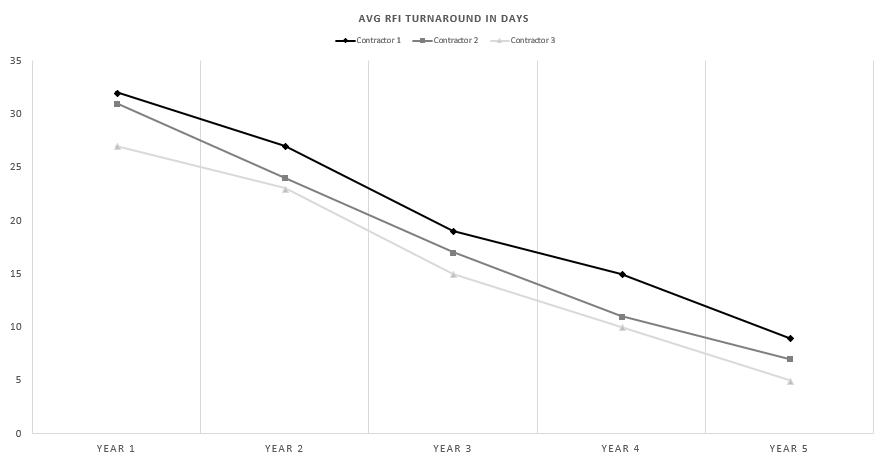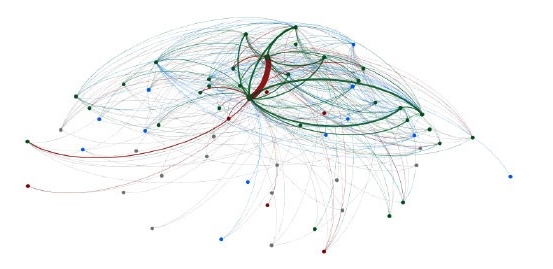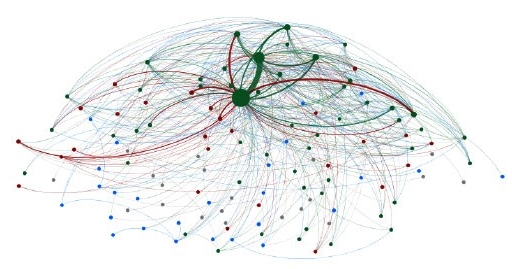The Best Engineering and Construction Organisations Extract Deep Insights Out Of Project Data
In the build sector there is a common view that each project is unique and therefore should be treated differently, which has caused for projects to run in isolation not transferring any of the knowledge from previous projects using the rich insights available within project data. Project Directors hold control over the adoption and implementation of new initiatives and innovation however their risk averse attitude and focus on delivery has resulted in limited addition of ‘lessons learned’ from previous projects.
For example, it seems natural that innovations from Crossrail (a highspeed rail project connecting the outskirts of London) would transfer to HS2 (a highspeed rail project connecting Manchester to London). However, compared to the number of people who have transferred from Crossrail to HS2, the number of innovations which have made it across is surprisingly low. Leading Engineering and Construction firms need to find better ways to connect project data and transfer insights across projects to create better value and deliver projects more efficiently.
Accelerating project delivery through digitising processes and enabling collaboration
The Engineering and Construction sector has suffered from a dispersed data landscape and lack of collaboration with both internal and external parties. The UK Government mandated implementation of BIM level 2 is a catalyst to accelerate the sector towards a more unified and collaborative approach to deliver projects but requires a shift in attitude and willingness to invest in collaboration.
While the implementation of level 2 BIM was a great achievement, many organisations still struggle to fully understand the tangible benefits of the new process and how BIM will deliver a definitive ROI. While the full benefits of BIM are often difficult to evaluate holistically, we have seen tangible benefits linked to collaboration delivered through digitisation of key processes which enabled three large main contractors to significantly reduce turnaround times for RFI’s.
 Recognising successful RFI’s management as a crucial part to project’s success, the main contractors transformed their previously distributed RFI management process through the implementation of a digital platform which allowed multiple parts of the organisation to access information is a single collaboration space.
Recognising successful RFI’s management as a crucial part to project’s success, the main contractors transformed their previously distributed RFI management process through the implementation of a digital platform which allowed multiple parts of the organisation to access information is a single collaboration space.
While the initial rollout was to the core RFI management teams, the 3 companies scaled the adoption throughout the organisation to accelerate and eliminate redundant manual processes. Overall the three contractors were able reduce the average turnaround time for RFI’s by 27-34% each year.
Notably, a key driver of these efficiencies was project-wide adoption of a digital solution which connected all relevant parties seamlessly. Without all parties collaborating on a digitally connected platform, it would not have been possible to drive these efficiencies across the processes.
Detecting early warning signs in the design phase can detect issues which cause delays during the construction phase
The flow of information in a project is a key indicator to identify likely causes of delays or counterparts which will slow down the project in the construction phase. In this example we are looking at the interactions between different counterparts in a construction project.
The movement of information in the architectural or engineering design phase is an early indicator for performance in the construction phase. Identifying and investigating delays and bottlenecks early can reduce delays and keep the project on track.
In practice, delays in the architectural or engineering design phase can be an indicator for poor or incomplete designs prior to the award of the main contractor. An organisation which is slow to respond during the design phase is likely to be slow to clarify information as the project moves through to construction.
 Looking at a dataset from a large construction project, the network map shows the flow of information among parties in the early design phase of a large construction project. Green lines represent normal expected behaviour and red lines represent slow communication and long response times, compared to this main contractor’s average response times.
Looking at a dataset from a large construction project, the network map shows the flow of information among parties in the early design phase of a large construction project. Green lines represent normal expected behaviour and red lines represent slow communication and long response times, compared to this main contractor’s average response times.
 As the project progresses and moves into construction, the initial poor flow of communication spreads to other organisations as the project community grows. The delay in responses can be correlated to project performance KPI’s such as productivity, cost and time completion, and the early delays spread throughout the network. Identifying and resolving such issues early on can eliminate future delays, however once the delays spread through the network it is nearly impossible to identify the root cause.
As the project progresses and moves into construction, the initial poor flow of communication spreads to other organisations as the project community grows. The delay in responses can be correlated to project performance KPI’s such as productivity, cost and time completion, and the early delays spread throughout the network. Identifying and resolving such issues early on can eliminate future delays, however once the delays spread through the network it is nearly impossible to identify the root cause.
Understanding these types of trends and using early warning analytics to ensure issues are detected and addressed early are simple steps to delivering projects more effectively. The challenge for large projects is to manage and control all counterparts, therefore understanding the flow of information and removing any blockers is a vital activity and best practice for any successful project.
Identifying patterns in RFI & TQ volumes which have a direct impact on the number of variations raised throughout the project
Large projects are often riddled with issues which require fixing. Engineering and Constructions firms alike take a reactive approach to addressing project related issues, fixing the individual issue but not addressing the root cause. A project’s inability to address root causes can have a significant impact on quality. In a recent case study, we have seen analysis which uncovered a direct correlation between the volume of RFI’s and TQ’s on a project and the number of variations raised, particularly early in the project.
When a project is experiencing high volumes of design or contract related queries being raised early into the project it suggests a fundamental planning related misalignment or issue within the project which has a high probability of causing delays to the project later when schedule and cost are the focus.
Effectively identifying these issues can be challenging for main contractors due to the amount of parties involved and volume of data. Data visualisation tools, analysis of completed projects and automated issue detection can help project directors investigate issues early on and ensure fundamental issues aren’t progressing and spreading throughout the project.
The journey to data driven project delivery and connected project data
Most Engineering and Construction companies recognise that learnings from previously completed projects are valuable and ‘lessons learned’ should be taken into new projects as part of a continuous improvement process. However, the reality is that most companies do not have any standardised practice for data capture and re-use in place, making it very challenging to transfer insights between projects.
There are contractors who have made considerable investments into data management platforms which standardise data across projects as adoptions matures, however due to margin pressure and outdated business models most contractors have been reluctant to make investments into enterprise solutions.
The explosion of advanced open source technologies is a big opportunity for contractors and counterparts to transform data and operations to begin generating cross project insights in a cost-effective manner.
Big Data and Machine Learning is a major opportunity for E&C companies to generate cross-project insights and execute projects more effectively. In a recent example, an Engineering company was required to establish the evolution of contracts for a major construction project. The company needed to review and process over 39 million documents to establish the evolution of their long-term construction contracts. The firm decided to use machine learning technology to identify versions of a contract and its history using contracts, meeting minutes, agendas, emails. The company implemented a near-duplicate detection algorithm which scanned every document and clustered near-duplicate documents together based on their similarity. What would have taken a team of 10 solicitors months of work, was reduced to a single member of the legal team to quickly drill down into similar documents and explore the history of the documents in question in less than 3 days.
If you would like to learn how your organisation can accelerate its journey towards better use of project data through big data and advanced analytics, contact us today.